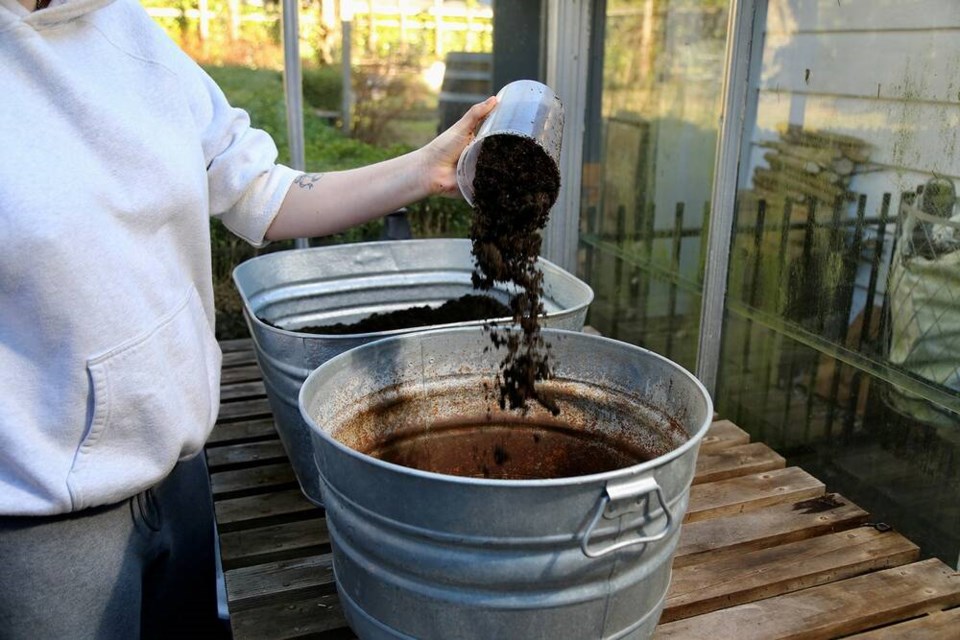We rested our raised beds again this winter. That is, I neglected to start a winter flight of greens and vegetables in the greenhouse in time to transplant under the cold frames.
Fortuitously, deep cold arrived so late that we were harvesting baby greens and hardy vegetables until very recently, when temperatures dropped substantially.
Also this week, seed sowing withdrawal set-in and I ached to get my hands dirty and begin gardening in earnest. It is still too early to sow nightshades indoors, so I thought I might full-on mimic nature and direct-sow in the middle of winter.
Market and home gardeners of old practiced various versions of winter sowing. Solar greenhouses, cellar or sunken greenhouses, and hot beds built over buried composting manure were as common as backyard chickens. After the second world war, the practice fell out of fashion, and now most home gardeners wait for spring soil to warm enough to sow or transplant into.
But what if we didn’t? What if we do as nature does, self-sowing seeds directly into and onto living soil well after gardening season, then letting the cold, damp and icy winter have her way with them?
As a permaculture designer, I am constantly asking myself, “What would nature do?” When I think I may have an answer, I try to re-create ecosystem services and conditions that facilitate the mechanism of action or result that I hope to achieve. On occasion I fail. Always I learn, and often I succeed.
Nature has the whole seed cycling thing figured out. Seeds and seed heads form on or in plants and those seeds ultimately find their way onto or under the soil, by either falling directly or by being relocated by wind, water, fire, humans or wildlife. Ideally, biological and mineral nutrients from decaying biomass and animal wastes accompany the seeds, and the lot rest quietly through the cold and wet winter, until chemical or mechanical forces of nature wake them up in the spring. Seems simple enough.
This very clever process breaks seed dormancy two ways – through “stratification,” which uses temperature (wet cold followed by warmth) to trigger germination, and/or “scarification” which uses mechanical, chemical or thermal methods to break down a protective seed coat to the same end. Animal and human traffic can scar or break a seed coat in nature, or we can do this manually using a nail file or a fingernail.
Considering all of this, we can imagine how we might simulate optimal conditions within a somewhat controlled environments in our garden, to contain and encourage germination earlier and more abundantly than what we might expect otherwise.
Influencer gardeners have demonstrated success winter-sowing in zippered baggies, bottom-punched and top-vented to allow for rain and snow-watering and drainage, and also by using plastic milk cartons sliced horizontally to create flip-top mini greenhouses.
We opted for sturdy, repurposed take-out and storage containers that stack and stow easily. After drilling tops and bottoms to facilitate water and biology cycling, we added six centimetres of cold, wet, living soil fortified with compost, poopy Alpaca wool and nutrient-rich castings. Dense sowings of perennial flower, brassica, mustard, lettuce, allium and chicory seeds came next, followed by a thin topcoat of soil well watered-in. Finally, we numbered the containers and sunk them slightly into soil in a sunny raised bed, insulated by hemp and leaf mulch.
These tiny coldframes will, I am confident, produce uncommonly early in the spring – masses of tiny, acclimatized seedlings ready to separate and transplant directly, saving both money and time.
Laura Marie Neubert is a West Vancouver-based urban permaculture designer. Follow her on Instagram @upfrontandbeautiful, learn more about permaculture by visiting her Upfront & Beautiful website or email your questions to her here.
For a taste of permaculture, watch the video below:




